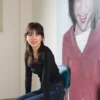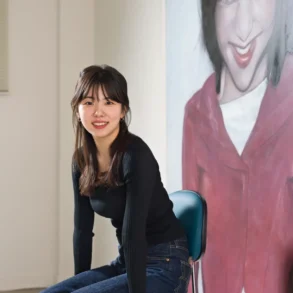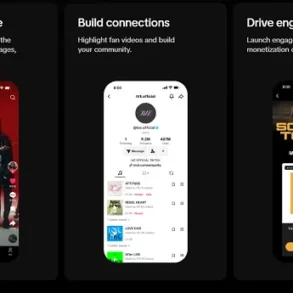
Which art fairs rule the social media spaces? For many years I researched the followings of the world’s principal museums as part of The Art Newspaper’s annual Visitor Figures survey. But as the world’s biggest art fair, Art Basel, takes place this month, I began to wonder: how do the fairs compare online?
Fairs are unique in the art world in that they revolve around one or a few events a year, compared with the rolling programming of a museum. Perhaps for that reason, the total followings on the four social media platforms Instagram, X (formerly Twitter), Facebook and TikTok for the 138 fairs or fair groups in my survey are much lower than for museums, which reach into the tens of millions each. But considering the more market-focused and somewhat exclusive nature of fairs, some of their followings are quite impressive.
The results showed that Instagram, as with museums, is the most popular platform for fairs, with a collective total of almost 10 million followers. Facebook brought in almost 5 million followers, X around 2 million, and TikTok only 65,000. Interestingly, for museums, X is the second most popular platform. This could reflect an older demographic of users on Facebook—and as the Art Basel and UBS Survey of Global Collecting 2023 points out, “older collectors make up a very important segment of the market and have some of the largest collections of art and antiques globally”.
With a social media audience 40 times our average show attendance, we like to say we have an ‘always-on’ approach
Tatiana Berg, Art Basel global social media manager
Unsurprisingly, the art fair powerhouse Art Basel topped the popularity list with more than 3.8 million followers across the platforms (that is almost a quarter of all 138 fairs’ followings put together). Not only does it have four fair events to bolster its social media output, but the company also produces its own editorial content and art market reports. Tatiana Berg, Art Basel’s global social media manager, says part of the fair’s high follower count can be attributed to early adoption of platforms (it joined Instagram in 2013, a couple of years after the app’s launch). “Ever since then, we’ve taken very seriously the power of social media,” says Berg, who leads a team of three, working across the US, Europe and Asia. “With a social media audience 40 times our average show attendance, we like to say we have an ‘always-on’ approach—communicating with our audiences 365 days a year, during and beyond the calendar of our fairs in Hong Kong, Basel, Paris and Miami Beach, and through bespoke content that speaks to both local and international audiences.”
Frieze is the second most popular fair on social media with almost 1.6 million followers. It, too, has multiple events in the year but has the added bonus of sharing the account with the popular magazine of the same name. “We used to have separate platforms, but we unified them to provide the most effective way to reach audiences of diverse voices across the art world,” a Frieze spokesperson says. “Frieze exists to bring together the art community and our social media platforms are no different. The only limit is that we have a lot to say, and it can get a bit busy sometimes.”
Traction for art and design
The top ten also shows that fairs that blend art and design have great traction on social media: the Salone Internazionale del Mobile in Milan came in third with almost 840,000 followers; the London-based contemporary craft and design fair Collect is fifth with nearly 400,000 followers; and the Design Miami group placed tenth with just under 302,000. Independent art fairs in two of the most important art centres in the world also placed in the top ten: The Armory Show in New York (seventh with more than 350,000 followers) and the London Art Fair (ninth with just under 303,000). Surprisingly, the London Art Fair does not have a dedicated social media team, although it is part of the multinational publishing house Immediate Media, whose social media specialists share insights and help to build the fair’s overall marketing strategy. “Social media has been a core part of the wider brand awareness and audience development strategy as well as increasingly being directly responsible for event ticket sales,” says the event director Sally Bent.
While the majority of the most followed fairs are based in the West, two are from Latin America: SP-Arte (sixth with just over 382,000) and Zona Maco (eighth with almost 337,000), perhaps reflecting the growing interest in the art markets of Brazil and Mexico. The other non-Western fair in the top ten is Art Dubai, which came in fourth with almost 525,000 followers, despite having only one fair event a year. Prerna Mishra, the social media manager at Art Dubai, says that the fair uses its point of difference as a champion of art from the Global South to bring value to its online accounts. “We always try to tell stories that are relevant to our audiences and programme, and that other organisations might not,” she says. “We pride ourselves on being a platform for the discovery of new things whether people are based in the region or not.”
Art Dubai is also one of only 35 fairs that have TikTok accounts with followers (only eight have more than 1,000). The art world in general has been slow to take up the popular app, which focuses on short-form video rather than static imagery. “One of the main drivers behind TikTok’s exponential growth has been its knowledge-sharing and educational role, so we felt there was a natural connection there with our programme, the stories we tell, as well as the relative youth of the population in the places we are looking to be more active,” Mishra says. “We’re a relatively small team, so we need to be careful not to spread ourselves too thinly, but we definitely see a role for TikTok in reaching new, younger audiences in a creative and fun way.”
By far the most popular fair on TikTok is UVNT Art Fair, which takes place in February/March each year in Madrid and includes around 30 contemporary art galleries. It has 27,200 TikTok followers and an impressive 620,000 likes. “Every fair has, of course, a commercial objective for the galleries it works with, but in TikTok what we are looking for is to reach Gen Z with a different goal, which has more to do with dissemination and education,” says Sara Coriat, UVNT’s exhibitor relations and communications director. “We show more in depth the artists we work with, artists we love, books we read or the work behind a great event. Connecting with them is connecting with the people that will run the art world in the future.”
Methodology
The social media follower data was recorded from Facebook, X, Instagram and TikTok on 13 May 2024 for all 138 fairs or fair groups mentioned in The Art Newspaper’s article “The full list of major art fairs in 2024, from Austin to Zurich”.
This post was originally published on this site be sure to check out more of their content








